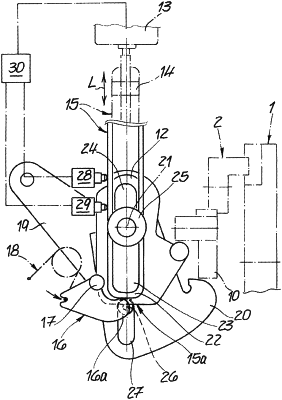| CPC E05B 81/16 (2013.01) [E05B 77/26 (2013.01); E05B 77/28 (2013.01); E05B 81/06 (2013.01); E05B 81/34 (2013.01); E05B 83/36 (2013.01); E05B 2015/041 (2013.01)] | 19 Claims |

|
1. A motor vehicle latch comprising:
a locking mechanism including a catch and a pawl,
a power locking unit comprising an electromotive drive and a linear thrust member that is driven by the electromotive drive, and a coupling lever operatively coupled to the linear thrust member,
a first operating lever, and
a blocking lever,
wherein in an unlocked position of the power locking unit, said first operating lever acts on the coupling lever that is then engaged to open the locking mechanism, and wherein in a locked position of the power locking unit, said first operating lever performs an idle stroke relative to the coupling lever that is then disengaged,
wherein the electromotive drive acts on the linear thrust member to engage with the coupling lever to move the linear thrust member and the engaged coupling member between a basic position when the power locking unit is in the unlocked position where the coupling lever is actable on by the first operating lever, and an extended position when the power locking unit is in the locked position where the coupling lever is not actable on by the first operating lever, wherein the linear thrust member is held in at least one of the basic position or the extended position with the aid of the blocking lever,
wherein the blocking lever is equipped with a spring which biases the blocking lever in a direction of the linear thrust member,
wherein, in the unlocked position, the blocking member engages a first side of the linear thrust member to bias the linear thrust member and the coupling member toward the basic position, and
wherein, in the locked position, the blocking member engages a second side of the linear thrust member to not bias the linear thrust member and the coupling member toward the basic position, wherein the first side and the second side are different.
|